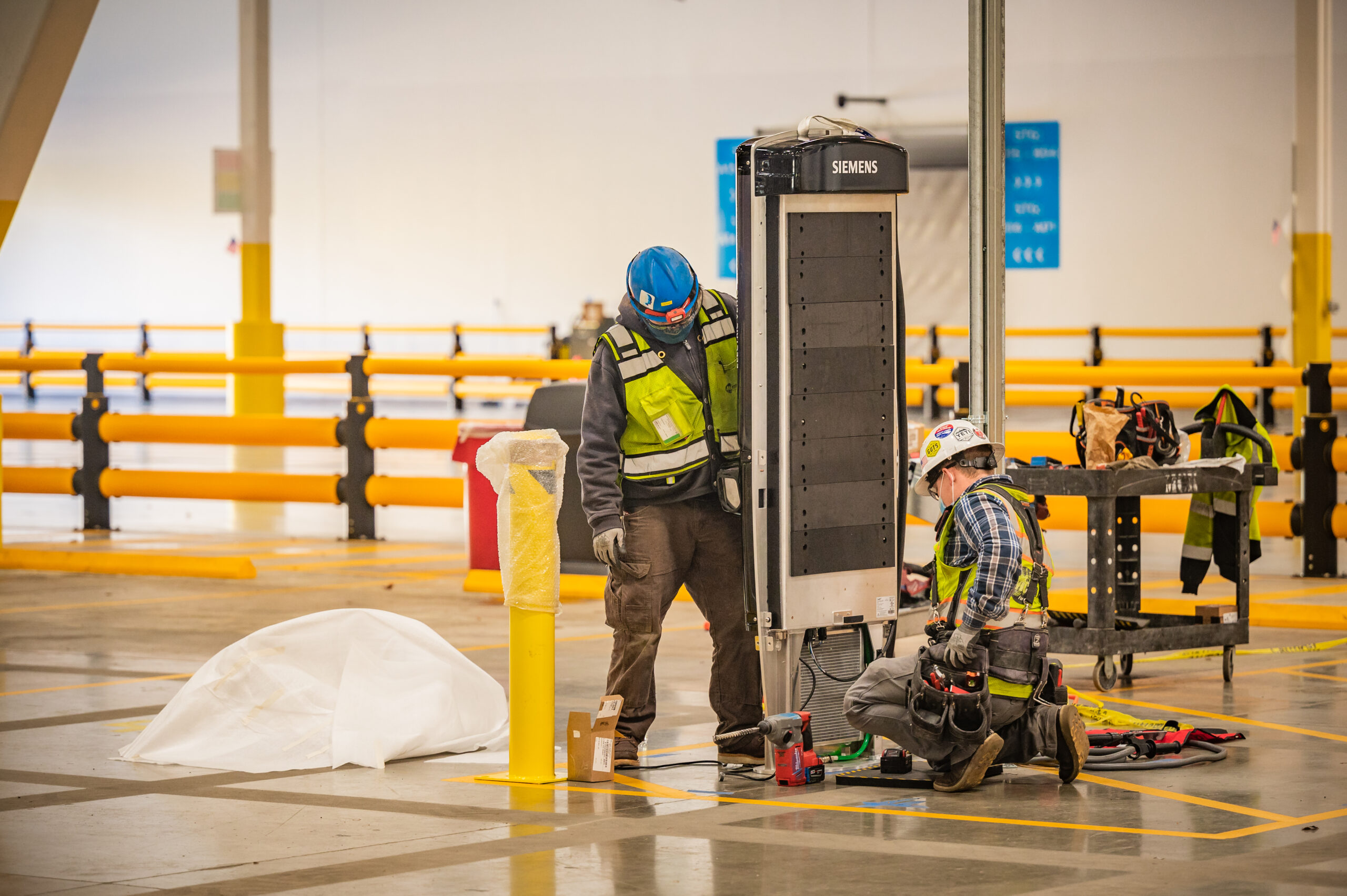Integrated MEPFT Crushes Costs and Delivers a Single Point of Accountability
Creating a building is…complicated.
As buildings become more complex and schedules more demanding, owners are looking for a singular, integrated deliverer of all building systems. For McKinstry, this means linking plumbing, piping, sheet metal, fire protection, electrical and data into an integrated and seamless design-build delivery.
Integrated delivery is more than a business methodology at McKinstry, it is a philosophy reflected in everything we do: from how we approach the built environment to how we relate to our employees. The proximity of McKinstry’s skilled tradespeople and their interactions with each other facilitates smooth communication on every job. This, in turn, drives waste and redundancy out of the design-build process to save our client’s time and money while providing high-performing facilities that continue to perform optimally over time.
Trading Adversarial for Accountable
The traditional delivery process of “design-bid-build” typically results in a process of “design-bid-build-change order” because no individual firm takes full responsibility for the project. The McKinstry process of design-build provides our customers with a single point of responsibility from design through project completion. This eliminates change orders unless a program modification is made and provides a much faster and more efficient delivery for the project.
Since our engineers and trade professionals are in-house staff, we are always looking for the best project solutions while eliminating the typical posturing inherent to multi-trade stakeholder input. We leverage early knowledge capital contributions across trades to make the best decisions for the project. Our teams are guided by shared values to deliver an owner’s vision without compromising on cost, schedule or programming. We make it our job to manage the entire design-build-operate-maintain process so owners can focus on the things that matter instead of mediating between trade partners.
Our delivery method eliminates situations where one trade’s advantage comes at the expense of another. With one master budget and one contractor, we are driven to find the most collectively favorable solutions for any schedule- or budget-driven challenge. We always foster a mentality of doing what is best for the overall project instead of putting individual trade’s interests first.
Optimized, Effective, Efficient
Our integrated delivery process is based on outcomes where critical system decisions can be made holistically. With in-house coordination of almost every major trade we can ensure that there are no scope gaps that commonly show up with multiple contractors performing varying scopes. Because we are the designer and the builder for all trades, we typically see non-owner-driven change orders reduce by roughly 50%. Integrated delivery with McKinstry ensures there aren’t disputes or misunderstandings which slow projects down and add costs.
Continuous Cost Reduction
Since our construction team works so closely with our design team during the creation of the design, we’ve developed an on-going value-engineering process that assures the design is developed in the most cost-effective manner. Ideas are always tested against the baseline budget and against true and accurate cost metrics to be sure the equipment and systems that are selected are appropriate for the project. The savings we look for include not only first cost opportunities but also overhead, general conditions and operation costs AND service and maintenance cost improvements.
In addition, we do not add compounding mark-ups to our integrated projects. We operate under one contract and do not pass through multiple markups in sub-tier contracting models. During construction our integrated construction team shares people, tools and resources across all McKinstry disciplines. This further contributes to the cost reduction realized on integrated projects.
Providing Performance Pathways
While there are prescriptive methods to make a building more sustainable with a traditional delivery method, they often do not deliver impactful results. To make buildings measurably more efficient, one has to leverage more complex interactions between building systems. This adds complexity to the design scope, and without proactive planning and implementation, can lead to non-viable design decisions, reduced building operations and failure to achieve sustainability certifications. McKinstry not only leverages our multi-trade engineering capabilities, but we also employ in-house energy and performance engineers along with sustainability consultants to ensure building design encompasses sustainability goals from the get-go.
Guaranteeing Performance Outcomes
A guaranteed maximum cost for projects is not only “expected” but generally serves as the “basis” by which the contractor is judged and selected. But a guarantee of the building “performance” should be equally important. What good is the assurance of a reasonable and predictable cost outcome if the performance of the building system falls short of facility needs? McKinstry is prepared to guarantee both the total cost of the project AND the performance of any system we install. As we develop the design of a facility, we can map out and guarantee virtually any component of the design within our direct control. We offer performance guarantees for equipment and performance measures, energy usage and efficiency and operational and maintenance costs.
It’s common for McKinstry to provide multiple levels of guarantee on a project. This is made possible because we’re involved in both design and construction. Our in-house Knowledge Response Center (KRC) is a robust building monitoring offering allowing us to ensure a building functions as designed and performs optimally after completion.
Bridging the Building-IT-Operations Gap
Owners and developers who hold and operate their buildings bear an even greater degree of risk over time due to the complex web of responsibilities, subscriptions and service contracts left behind by the fragmented construction process.
As we move towards a more connected future, McKinstry remains at the forefront of building technology integration services as a part of our integrated capabilities to support increasingly complex building technology systems. New technologies have added further complexity and have led to the robust growth of sensor, cable and controller deployment. These trends reinforce industry silos and leave owners exposed to greater financial and performance risk.
An integrated MEPFT design-build team eliminates a substantial amount of that risk by taking responsibility for key outcomes and delivering a set of turn-key systems that align with the design intent. But for those who aim to position their shell and core buildings as a flexible and smart space, technology implementation must be guided by smart-building industry experts who can rigorously evaluate alternatives and deploy the systems that minimize costs, maximize up-time and attract tenants. McKinstry knows what technology is coming around the corner and can lead clients to the solution that works best for them.
McKinstry is the only contractor in the Pacific Northwest who can provide the contextual, technical and operational know-how to deliver high-performing buildings.
Explore Other Insights

McKinstry’s David Ramsey on Renewable Energy Innovation
“One of my favorite parts of my job is presenting a solution to a client — that moment when they understand the oppor…

Funding Fleet Electrification to Accelerate Decarbonizati…
Partnering to build a zero-carbon future We are proud to work with our partners to be, and remain, at the fo…

McKinstry’s Claire Puryear on Empowering Clients With Act…
“Earth Month is a good reminder of how we can all do a little bit to protect the blue dot we call home.” Claire Pu…